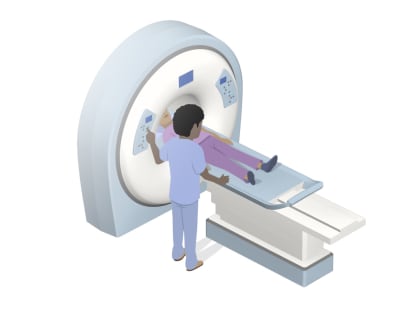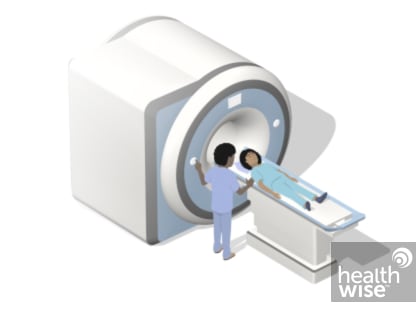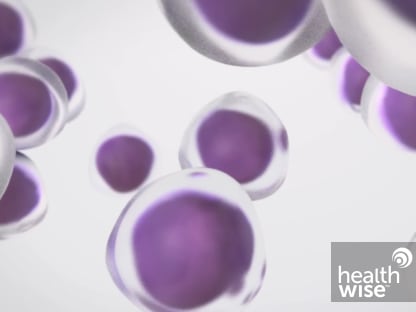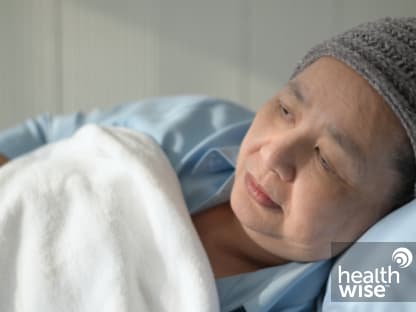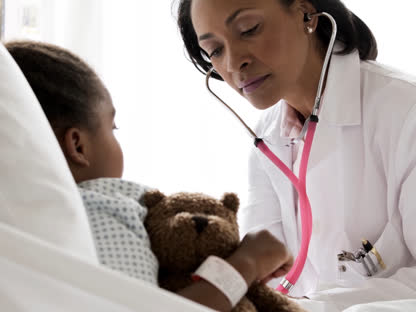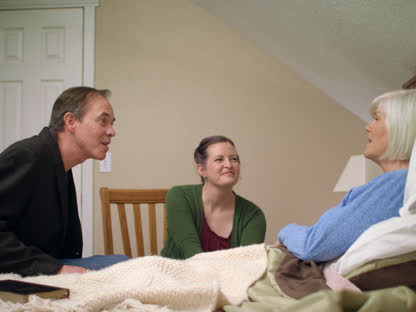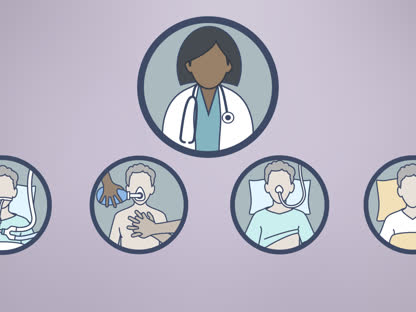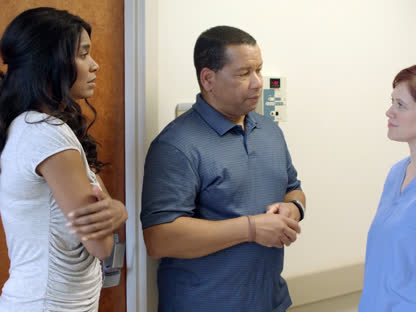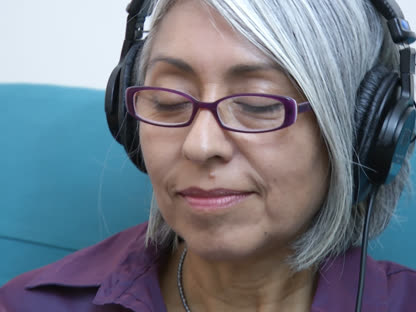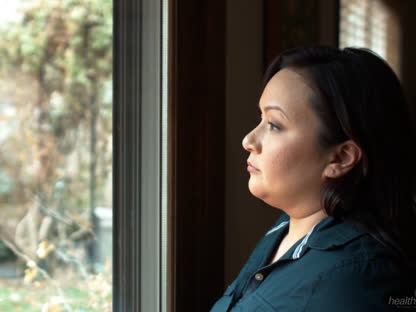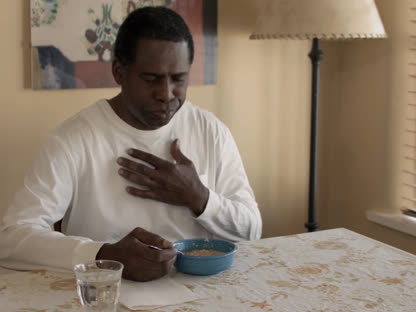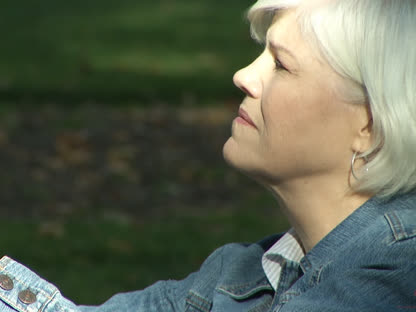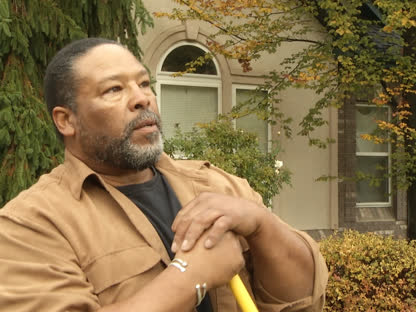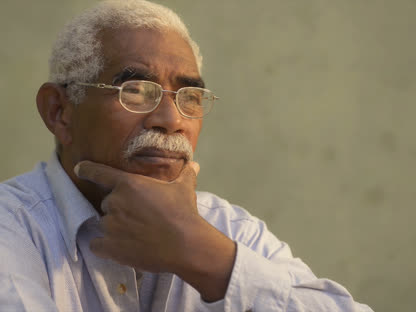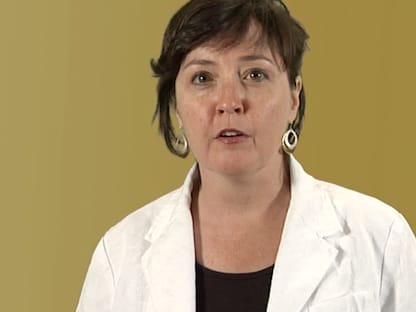This is a HealthLine Online content page created by Healthwise. HealthLine Online helps you make better decisions about your health.
Acute Myeloid Leukemia (AML)
Condition Basics
What is acute myeloid leukemia (AML)?
Acute myeloid leukemia (AML) is also called acute myelogenous leukemia. It's a type of leukemia that causes the body to make too many myeloblasts.
Myeloblasts are a type of young white blood cell. They usually become mature, infection-fighting cells. But if those young cells don't mature like they should, they can start to grow abnormally and out of control. Then they can crowd out normal blood-making cells and cause swollen glands or other lumps.
What causes it?
Experts don't know what causes leukemia in most people. But they think that most leukemia happens because of things in the environment and in a person's genes.
Some things may increase the risk, such as having certain genetic conditions or being exposed to large amounts of radiation or certain chemicals.
What are the symptoms?
Symptoms of AML include weakness and fatigue, fever, and night sweats. You may also bruise or bleed easily or have pain or a feeling of fullness below the ribs. Or you may have pinpoint spots under the skin from bleeding.
How is it diagnosed?
The doctor will do a physical exam and blood tests. A bone marrow aspiration and biopsy also will likely be done. If the results point to leukemia, the doctor may do more tests on the blood or bone marrow samples to learn more about the type or subtype of leukemia it is.
How is AML treated?
Treatment for AML usually has two steps. Chemotherapy is given to put leukemia into remission. Then post-remission therapy is given to treat any remaining leukemia cells and reduce the risk of relapse. This therapy may involve getting more chemotherapy or a stem cell transplant. You may also have targeted therapy or get other medicines.
Health Tools
Health Tools help you make wise health decisions or take action to improve your health.
When to Call a Doctor
Call 911 anytime you think you may need emergency care. For example, call if:
- You passed out (lost consciousness).
Call your doctor if you have symptoms. For example, call if:
- You have swollen glands in your armpits, groin, or neck.
- You have abnormal bleeding. For example, you have frequent nosebleeds, bleeding from the gums or rectum, more frequent bruising, or very heavy menstrual bleeding.
- You keep having fevers.
- You have night sweats.
- You have bone pain.
- You lose your appetite or lose weight without trying.
- You have swelling and pain in your belly.
- You have a new rash or skin changes.
If you have been diagnosed with cancer, be sure to follow your doctor's instructions about calling when you have problems, new symptoms, or symptoms that get worse.
Examinations and Tests
Your doctor will ask you about any current symptoms, your medical history, and your family history. You'll have a physical exam, where your doctor will check your lymph nodes, liver, and spleen.
You'll have tests, which may include:
- Lab tests, including a complete blood count.
- Imaging tests, such as a CT scan, an MRI, or an X-ray.
- A lumbar puncture to find out if leukemia cells are in the fluid in your spine.
- Tissue tests, such as a bone marrow aspiration and biopsy.
- Genetic tests that look for changes in your genes and chromosomes.
- Heart tests to check how well your heart works, such as an echocardiogram.
If the exam and test results point to leukemia, the doctor may do more tests on the blood or bone marrow samples to learn more about the type or subtype of leukemia it is.
Learn more
Watch
Treatment Overview
Treatment for AML may include chemotherapy, a stem cell transplant, and targeted therapy. Or you may join a clinical trial for new treatments. Your treatment plan will be based on your test results and other things, such as your age and your overall health.
Treatment plans for AML usually have two steps:
- Induction therapy. This is done to destroy leukemia cells in the blood and bone marrow and cause (induce) you to go into remission.
- Post-remission therapy. This is done to treat any remaining leukemia cells and reduce the risk of relapse. It's given once the leukemia is in remission.
If you have a type of AML called acute promyelocytic leukemia, your treatment plan will be different. It will likely involve medicines such as arsenic trioxide and all-trans retinoic acid (ATRA). It may also include chemotherapy or other medicines.
Chemotherapy, stem cell transplants, and targeted therapy are used when leukemia doesn't respond to treatment. They may also be used if AML comes back (relapses) after a period of time.
Learn more
Watch
Supportive Care
Hospice palliative care is a type of care for people who have a serious illness. It's different from care to cure your illness, called curative treatment. Hospice palliative care provides an extra layer of support that can improve your quality of life—not just in your body, but also in your mind and spirit. Sometimes hospice palliative care is combined with curative treatment.
The kind of care you get depends on what you need. Your goals guide your care. You can get both hospice palliative care and care to treat your illness. You don't have to choose one or the other.
Hospice palliative care can help you manage symptoms, pain, or side effects from treatment. It may help you and those close to you better understand your illness, talk more openly about your feelings, or decide what treatment you want or don't want. It can also help you communicate better with your doctors, nurses, family, and friends.
End-of-life care
It can be hard to live with an illness that cannot be cured. But if your health is getting worse, you may want to make decisions about end-of-life care. Planning for the end of your life does not mean that you are giving up. It is a way to make sure that your wishes are met. Clearly stating your wishes can make it easier for your loved ones. Making plans while you are still able may also ease your mind and make your final days less stressful and more meaningful.
Learn more
Watch
Self-Care
- Take your medicines exactly as prescribed. Call your doctor or nurse advice line if you think you are having a problem with your medicine.
- Follow your doctor's instructions to relieve pain. Pain from cancer and surgery can almost always be controlled. Use pain medicine when you first notice pain, before it becomes severe.
- Eat healthy food. If you do not feel like eating, try to eat food that has protein and extra calories to keep up your strength and prevent weight loss.
- Get some physical activity every day, but do not get too tired.
- Get enough sleep, and take time to do things you enjoy. This can help reduce stress.
- Think about joining a support group. Or discuss your concerns with your doctor or a counsellor.
- If you are vomiting or have diarrhea:
- Drink plenty of fluids to prevent dehydration. Choose water and other clear liquids. If you have kidney, heart, or liver disease and have to limit fluids, talk with your doctor before you increase the amount of fluids you drink.
- When you are able to eat, try clear soups, mild foods, and liquids until all symptoms are gone for 12 to 48 hours. Other good choices include dry toast, crackers, cooked cereal, and gelatin dessert, such as Jell-O.
- If you have not already done so, prepare an advance care plan. An advance care plan provides instructions to your doctor and family members about what kind of care you want if you become unable to speak or express yourself.
Learn more
- Cancer: Controlling Cancer Pain
- Cancer: Controlling Nausea and Vomiting From Chemotherapy
- Cancer: Home Treatment for Constipation
- Cancer: Home Treatment for Diarrhea
- Cancer: Home Treatment for Fatigue
- Cancer: Home Treatment for Mouth Sores
- Cancer: Home Treatment for Pain
- Cancer: Home Treatment for Sleep Problems
- Cancer Support: Managing Stress
- Eating Well During Cancer Treatment
- Hair Loss From Cancer Treatment
Watch
Complementary Treatments
Some people use complementary therapies along with medical treatment. They may help relieve the symptoms and stress of cancer or the side effects of cancer treatment. Therapies that may be helpful include:
- Acupuncture to relieve pain and other symptoms.
- Meditation or yoga to relieve stress.
- Massage and biofeedback to reduce pain and tension.
- Breathing exercises to help you relax.
Talk with your doctor about any of these options you would like to try. And let your doctor know if you are already using any complementary therapies. They are not meant to take the place of standard medical treatment. But they may help you feel better and cope better with treatment.
Learn more
Watch
Getting Support
Relationships take on new importance when you're faced with cancer. Your family and friends can help support you. You may also want to look beyond those who are close to you.
- Reach out to your family and friends.
Remember that the people around you want to support you, and asking for help isn't a sign of weakness.
- Tell them how they can help.
Your friends and family want to help, but some of them may not know what to do. It may help to make a list. For example, you might ask them to:
- Run errands or pick up kids.
- Deliver meals or groceries to your home.
- Drive you to appointments.
- Go to doctor visits with you and take notes.
- Look for help from other sources.
Places to turn for support include:
- Counselling.
- Counselling can help you cope with cancer and the effect cancer is having on your life. Different types of counselling include family therapy, couples therapy, group counselling, and individual counselling.
- Your health care team.
- Your team should be supportive. Be open and honest about your fears and concerns. Your doctor can help you get the right medical treatments, including counselling.
- Spiritual or religious groups.
- These groups can provide comfort and may be able to help you find counselling or other social support services.
- Social groups.
- Social groups can help you meet new people and get involved in activities you enjoy. Focus on activities that bring you comfort, such as spending time outdoors or being with children.
- A cancer support group.
- Cancer support groups offer support and practical advice. You can hear others talk about:
- What it's like to live with cancer.
- Practical ways to manage your cancer treatment and its side effects.
- Ways to cope with your illness.
Learn more
Watch
Credits
Current as of: October 25, 2023
Author: Ignite Healthwise, LLC Staff
Clinical Review Board
All Healthwise education is reviewed by a team that includes physicians, nurses, advanced practitioners, registered dieticians, and other healthcare professionals.
Current as of: October 25, 2023
Author: Ignite Healthwise, LLC Staff
Clinical Review Board
All Healthwise education is reviewed by a team that includes physicians, nurses, advanced practitioners, registered dieticians, and other healthcare professionals.
This information does not replace the advice of a doctor. Ignite Healthwise, LLC, disclaims any warranty or liability for your use of this information. Your use of this information means that you agree to the Terms of Use. Learn how we develop our content.


